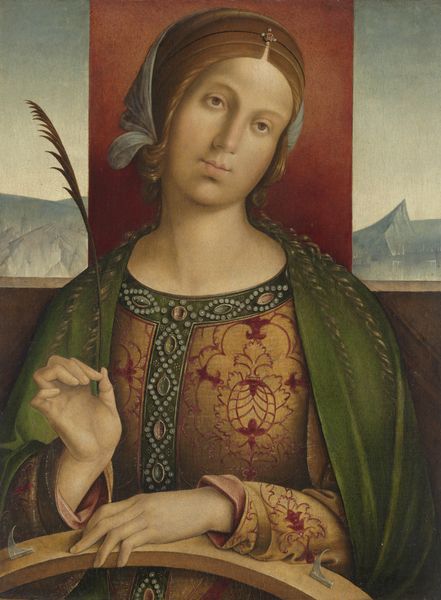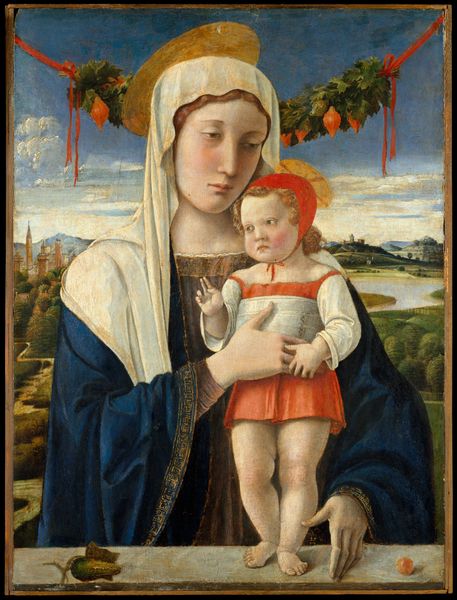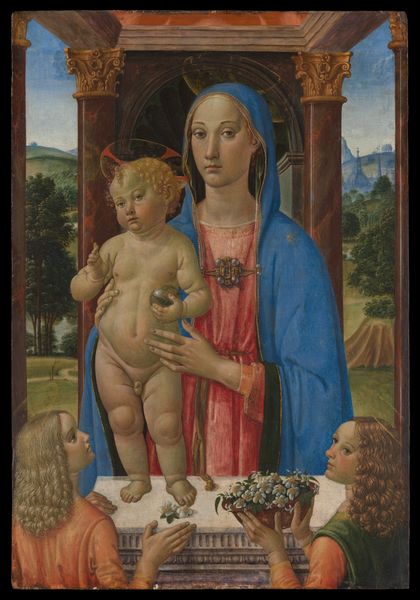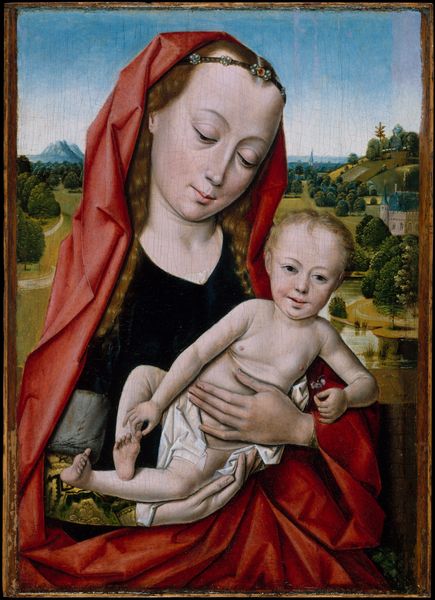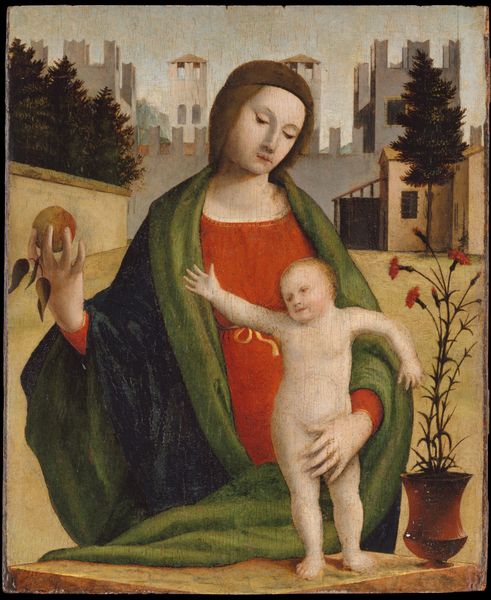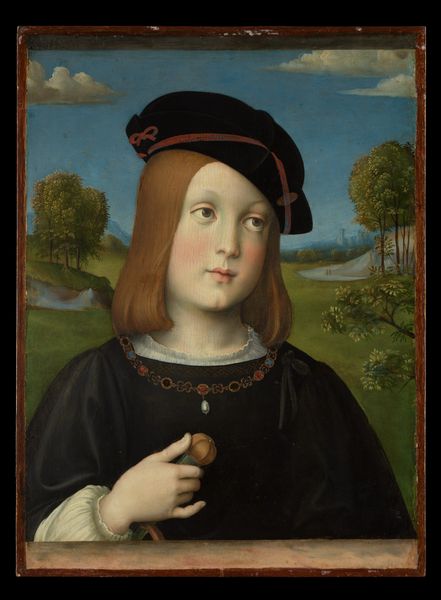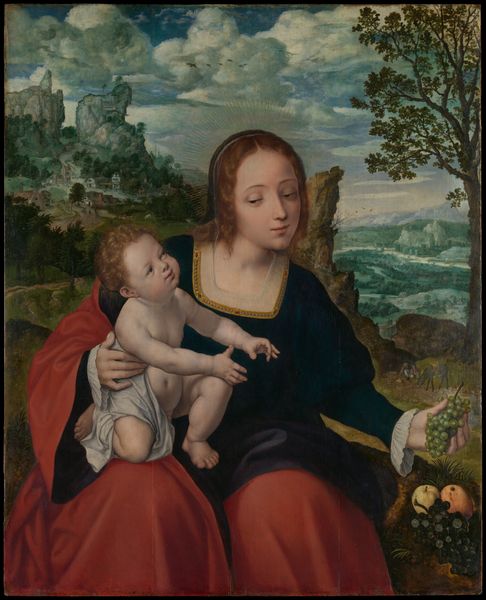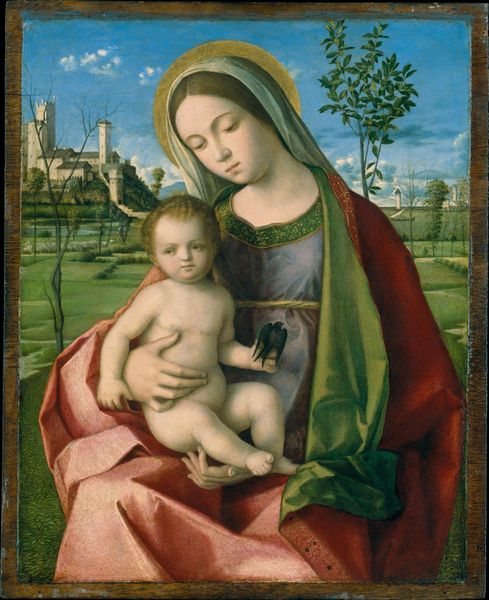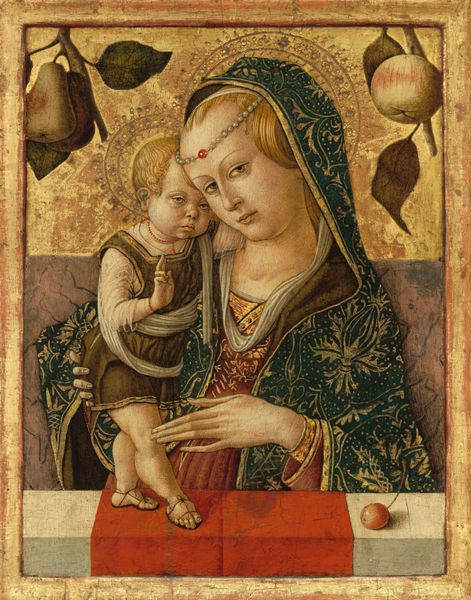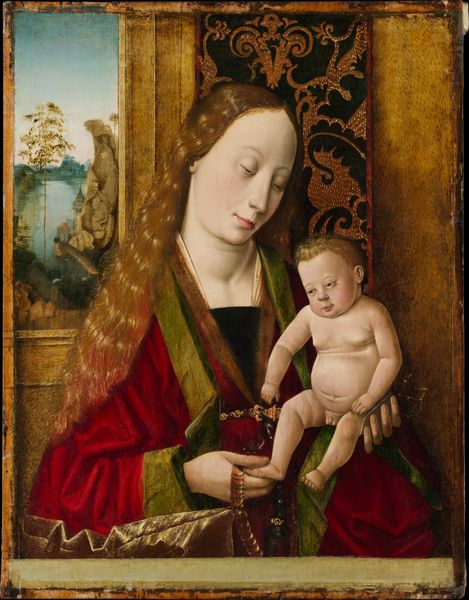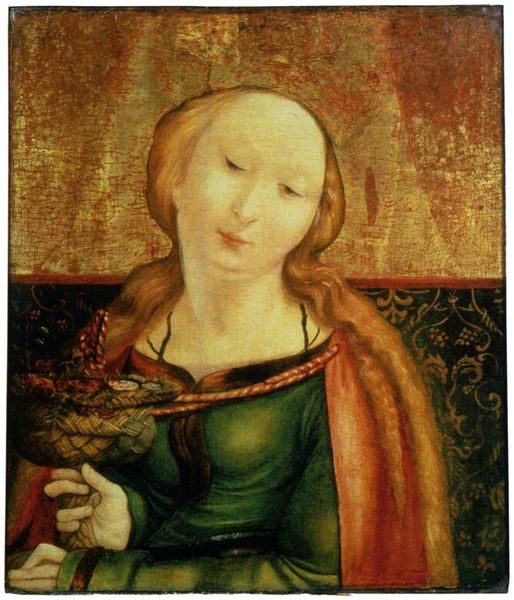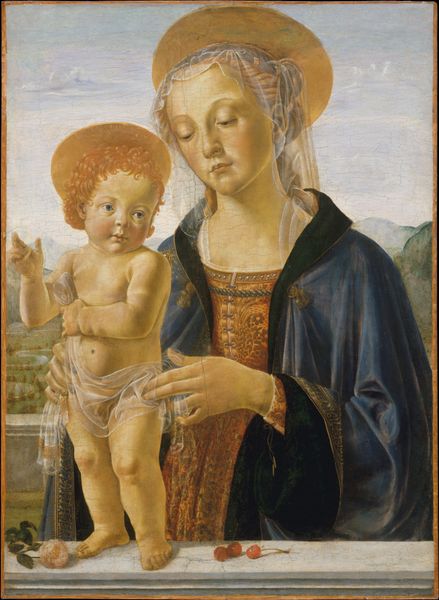
Portrait of a Young Woman 1490 - 1500
0:00
0:00
painting, oil-paint
#
portrait
#
painting
#
oil-paint
#
landscape
#
11_renaissance
#
italian-renaissance
#
realism
Dimensions: 23 1/8 x 15 3/4 in. (58.7 x 40 cm)
Copyright: Public Domain
Curator: Welcome. Before us hangs Lorenzo di Credi’s "Portrait of a Young Woman," executed sometime between 1490 and 1500, a jewel of the Italian Renaissance, now residing here at the Metropolitan Museum of Art. Editor: She projects an unsettling quietude. The portrait, though classically composed, emits an aura of melancholic stillness. Curator: Note how the artist utilizes oil paint to achieve a delicate luminosity, particularly in rendering the young woman’s face. Her features are subtly modeled, capturing an ideal of Renaissance beauty, reflecting the classical influence of harmony and proportion. Editor: Yet the near-opaque black fabric, the fine veil, and even the jewelry betray a calculated emphasis on luxurious materials—revealing a patron likely embedded within the Florentine textile trade. Who produced the pigment? Where did that fine linen originate? Curator: Interesting point. Di Credi’s command of chiaroscuro not only defines her form but also imbues the surrounding landscape with depth, guiding the eye through planes of expertly balanced color and line. The framing evergreens create a fascinating visual rhythm around the central figure. Editor: Agreed. Though that rhythm speaks less of landscape and more of material access; consider the societal pressures to portray wealth. It also presents a commentary on social roles and enforced purity of craft, as the young woman may have been pushed into that ideal rather than a "natural" evolution of the artist or sitter's intentions. Curator: Indeed. It encapsulates the artistic dialogue between realism and idealization prevalent during this epoch. We are left to ponder both the visual narrative presented and its underlying meaning within a cultural context. Editor: I find myself pondering the layers of unseen hands behind each delicate brushstroke, each shimmering jewel. To what extent are we celebrating art, or a well-executed economic transaction?
Comments
No comments
Be the first to comment and join the conversation on the ultimate creative platform.
